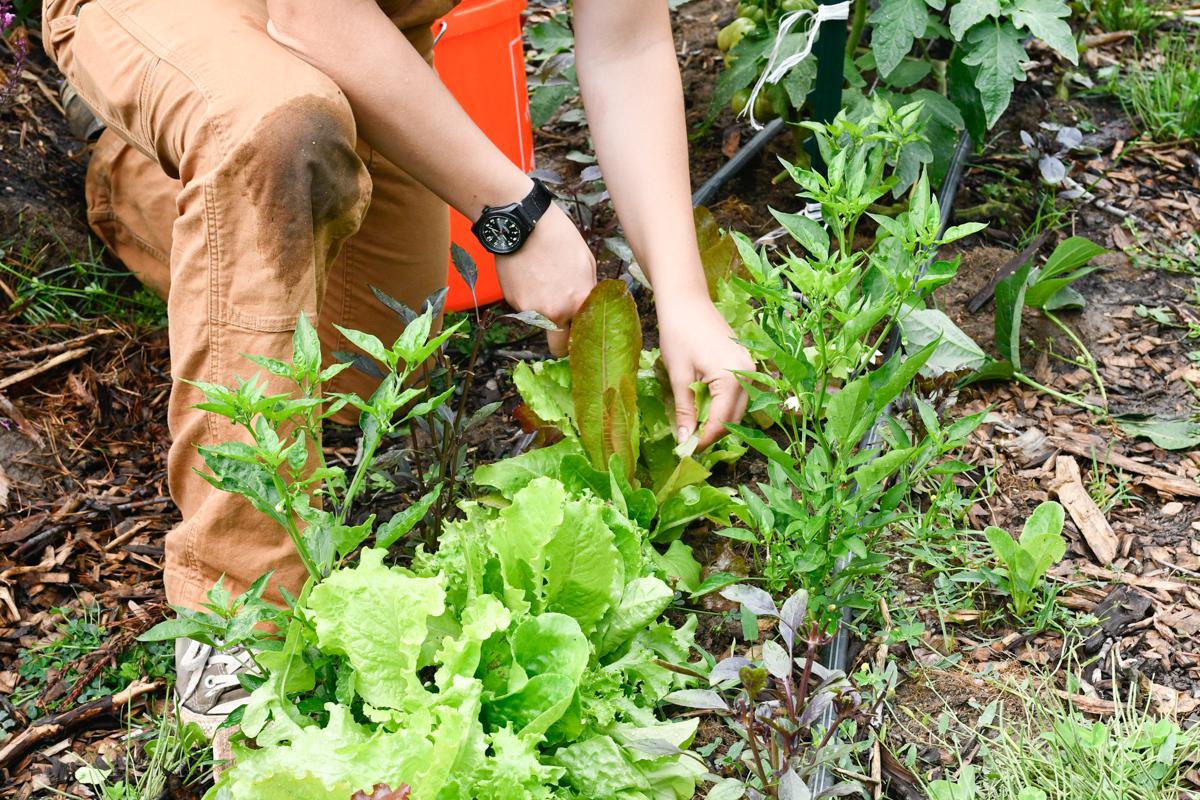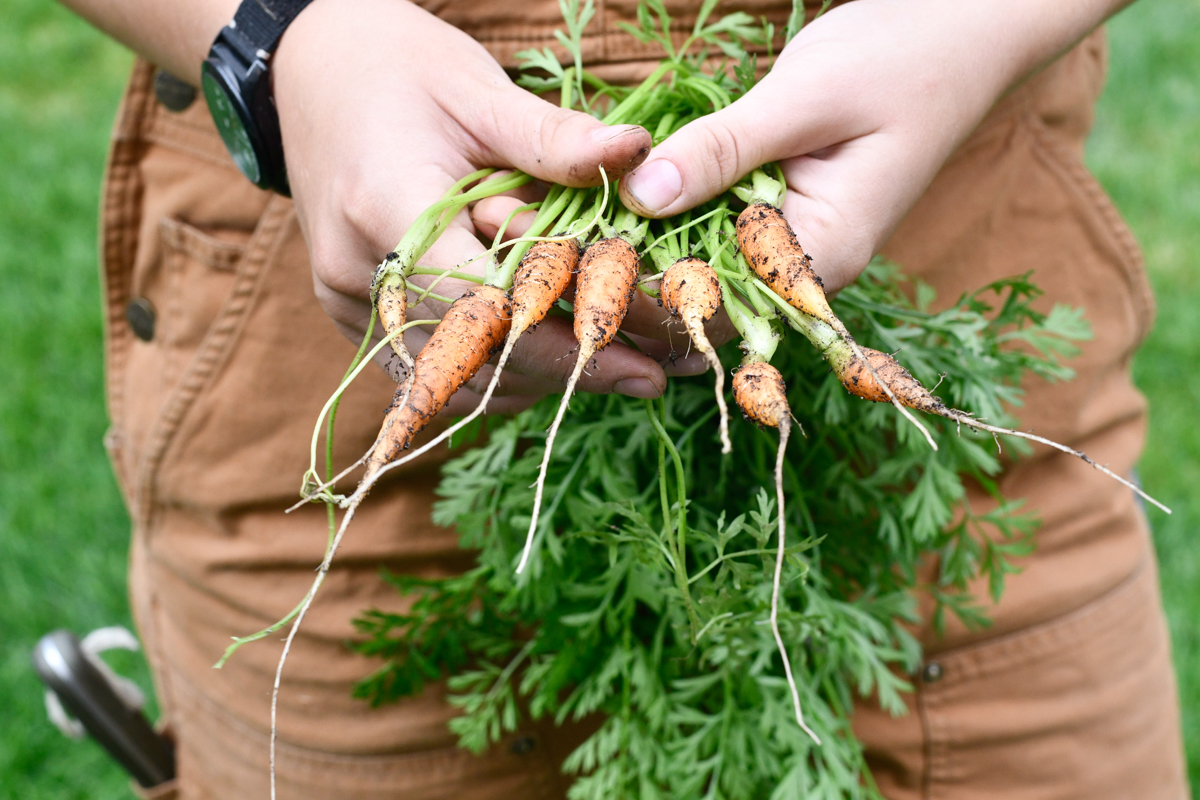
I’ve made every gardening mistake in the books so you don’t have to!
By Jennifer “Fern” Deininger, Farmer & Gardener
When walking around the Front Range you may have noticed a significant number of homeowners transitioning their front yards into xeriscapes, vegetable gardens, perennial habitats, or pollinator gardens. There is an increasing number of first-time gardeners in the United States, and with that many homeowners have begun to replace parts of their yard with more environmentally- and socially-beneficial landscapes.
In fact, based on research from Bonnie Plants, more than 20 million Americans planted a vegetable garden for the first time during the COVID-19 pandemic.
For years I’ve worked with homeowners to turn their lawns into gardens and food-producing micro-farms, so below I’ve shared six things to consider before taking the leap.
1. Consider how light and water move across your landscape. Food-producing gardens often need 6+ hours of sunlight per day. When picking a spot to install a raised bed or plant your in-ground garden, look up. Try picking a spot that won’t be obstructed by large trees or shade from a house. If you’re doing this in the winter, keep in mind that your trees will likely cast even more shade once they grow their leaves in the spring. You’ll also want to consider how water moves across your landscape. I recommend picking a relatively level spot if you’re creating an in-ground bed or taking the time to carefully level your raised beds if you’re building a raised-bed garden. It makes a huge difference! If you’re planting in-ground, selecting a location where water doesn’t flow too quickly across your garden area in a rain storm will help slow erosion and prevent run-off from any fertilizers you use. Similarly, if you can avoid planting in the lowest spot on your property, then your garden will be less likely to flood in a rainstorm.
2. Pick no more than one big landscaping project each year to make your installation more manageable. It can sound really enticing to go from lawn straight into having a beautifully planned garden with lush raised beds, trellises, mulched walkways, and mature perennial plants, but all of these things take time, money, and resources. I recommend homeowners start with one big project per year, whether that is removing the lawn, installing a few beds, or purchasing and planting ground cover. Perennial plants can be expensive and take a few years to establish, but purchasing a few every year will prevent overcrowding and is easier on your wallet! I recommend starting with projects that address the layout and infrastructure of your garden. This may include building raised beds, installing irrigation, removing your lawn, etc.
3. Plan for visitors! I always try to plan for what sorts of beings may be visiting the garden. Whether it’s children, dogs, deer, aphids, bunnies, or squirrels, knowing in advance who is likely to visit your garden can help you select the right plants and the right protection. If children will be around, stay away from any perennials that may be toxic like sweet peas or foxglove. If you have deer that come around, try planting a border of deer-resistant plants like lavender, columbine, and larkspur. If you have a dog that loves to dig, then you may want to consider a tall raised bed rather than an in-ground garden. If you’ve noticed you have a large number of pests like Japanese beetles or aphids, planting insectaries (plants that attract beneficial insects) like cilantro, dill, cosmos, coreopsis, and yarrow is helpful!
4. Have a plan for irrigation before you dive in! Many perennial plants need frequent irrigation for at least the first few years in a garden and annual vegetables may require irrigation every day or every other day depending on many factors. Irrigation can seem daunting, but there are many great ways to water your garden (aside from lugging a watering can or hose around). Whether you tap into an existing irrigation system at your home, install a whole new one, or add a timer to a spigot and run your irrigation from there, I recommend reaching out to a professional who can help with the design and the installation. Irrigation mistakes can be costly and can cause damage and flooding in your home, so make sure to speak with a pro before diving in.
5. Protect the soil! Healthy soil is the foundation of any garden. When removing your lawn, try to avoid compacting the soil or letting it sit bare in the hot summer sun. Soil needs air, water, and nutrients to be happy. Whether you’ll be planting in-ground or in a raised bed, I recommend aerating the soil and adding two inches of high-quality compost in the spring and fall. If you’re looking for a soil-friendly way to replace your lawn with a garden, feel free to check out our other blog post about sheet mulching! *Link to sheet mulching
6. Call before you dig! Call 811 a few business days before any projects that involve digging. Whether you’re planting a young tree or installing a fence, call 811 to make sure your underground utilities are flagged appropriately.
I hope these tips help you make smart and budget-friendly decisions when considering turning your lawn into a garden. If you have any questions about taking this step, we offer garden-coaching sessions at Boundless Landscapes to help empower homeowners to get outside and try something new. We’d love to support you!





